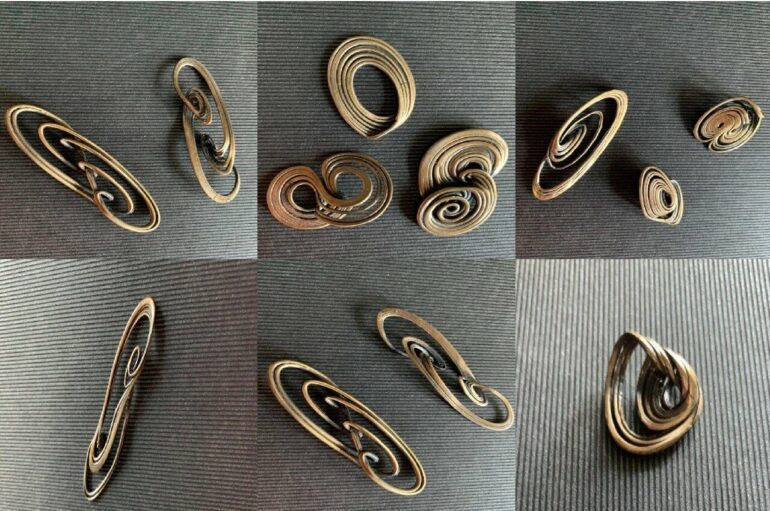The further out in time, the more unreliable a weather forecast. That’s because small variations in initial weather conditions can completely change the entire system, making it unpredictable. Put another way, in the “butterfly effect,” an insect can flap its wings and create a microscopic change in initial conditions that leads to a hurricane halfway around the world.
This chaos is seen everywhere, from weather to labor markets to brain dynamics. And now, in the journal Chaos, researchers from the University of Calabria explored how to turn the twisting, fractal structures behind the science into jewelry with 3D printing.
The jewelry shapes are based on the Chua circuit, a simple electronic system that was the first physical, mathematical, and experimental proof of chaos. Instead of an ordinary circuit, which produces an oscillating current, Chua’s circuit results in oscillations that never repeat.
“These chaotic configurations, called strange attractors, are complex structures that had never been observed before,” said author Eleonora Bilotta. “The depictions of such structures are strikingly beautiful, continually shifting when the point of view is changing. Jewelry seemed to be the best way to interpret the beauty of chaotic shapes.”
At first, the team tried to employ goldsmiths to create prototypes of the twisting, arcing patterns. But the chaotic forms proved too difficult to manufacture with traditional methods. In contrast, additive printing allows for the necessary detail and structure. By 3D-printing the jewelry, the team created a counter-mold for a goldsmith to use as a cast.
“Seeing the chaotic shapes transformed into real, polished, shiny, physical jewelry was a great pleasure for the whole team. Touching and wearing them was also extremely exciting,” said Bilotta. “We think it is the same joy that a scientist feels when her theory takes form, or when an artist finishes a painting.”
The jewelry can also be used as an educational tool, providing students the ability to develop their scientific knowledge and artistic creativity. By building Chua’s circuit, they can manipulate chaos and discover the extreme sensitivity to initial conditions. While designing the jewelry before sending it to be printed, they can tweak the parameters to generate different shapes according to personal taste.
In the future, the authors want to explore representations of chaos using spheres instead of lines. They also plan to create images of chaotic patterns and have developed an exhibition that can be adapted for international museums.
The article “Jewels from chaos: A fascinating journey from abstract forms to physical objects” is published in Chaos on Jan. 24, 2023.
More information:
Jewels from chaos: A fascinating journey from abstract forms to physical objects, Chaos An Interdisciplinary Journal of Nonlinear Science (2023). DOI: 10.1063/5.0130029
Provided by
American Institute of Physics
Citation:
Transforming chaos into manufacturable forms with 3D printing (2023, January 24)


